Are penguins birds? Have you ever wondered that because penguins cannot fly, that they might not actually be classed as birds at all? Well, you’re not alone. So in this article, we’re going to set the record straight and explain it all.
But first, here’s the quick answer, then we’ll dive into more details…
Are penguins birds? Penguins are indeed birds and are included in the classification of birds. This is defined by the fact that penguins lay eggs instead of giving birth to their offspring. In addition, they also feed their young with meals like krill, squid, and fish instead of milk from mammary glands.
The ambiguity around the classification of penguins is mainly due to their inability to fly. Penguins have often been observed either swimming underwater hunting for fish or waddling awkwardly across the icy surfaces of Antarctica.
Here’s also the complete list of what penguins eat. You might also want to know, whether penguins can actually fly. Or you might be wondering if penguins can outswim a seal!
All 18 penguin species
There are in fact 18 species of penguin, and each has its own size, coloring, preferred locations, and characteristics. Aside from their titled name, some also have nicknames, which is often why numbers can be confusing.
- Emperor penguin
- Galápagos penguin
- Humboldt penguin
- Little Blue penguin
- African penguin
- Chinstrap penguin
- King penguin
- Royal penguin
- Erect-crested penguin
- Fiordland penguin
- Magellanic penguin
- Adélie penguin
- Snares penguin
- Yellow-Eyed penguin
- Macaroni penguins
- Rockhopper penguin
- Gentoo penguin
Penguins comprise the 18 species of flightless marine birds that inhabit only the Southern Hemisphere. 13 of these species are on the endangered list! Which means they are protected.
The majority of the 18 species don’t actually live in Antarctica but between the latitudes 45° and 60° south, where they’re known to breed on various islands such as the Galápagos Islands. A few species are also known to occupy more temperate regions.
Their height ranges vary quite a bit, ranging from about 5 inches (13cm) for the Little Blue Penguin which is up to around 3lb (1.5jg) in weight. Through to around 4ft tall (110 cm) for the Emperor Penguin which weighs in at around 100lb (around 45kg). The weight and height of all other species of penguins fall in between these two.
The type of food consumed by each depends upon the type of species, their geographic region, and the time of year. The smaller southern penguins are known to feed mainly pon krill. cuttlefish, squid, and small fish which are also a substantial part of their diet.
The total amount of food consumed by an average penguin colony is immense, estimated to be well over several tons per day.
Penguin species images
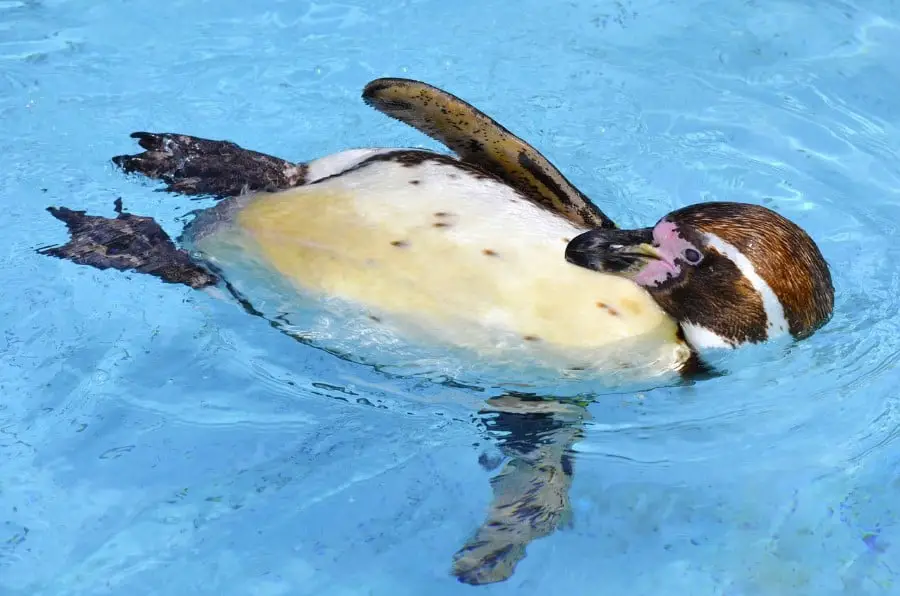
humboldt 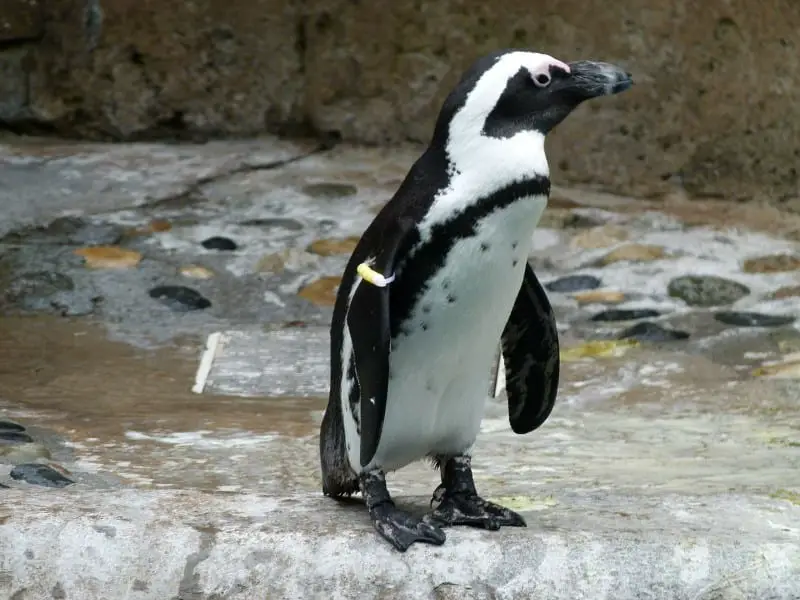
african 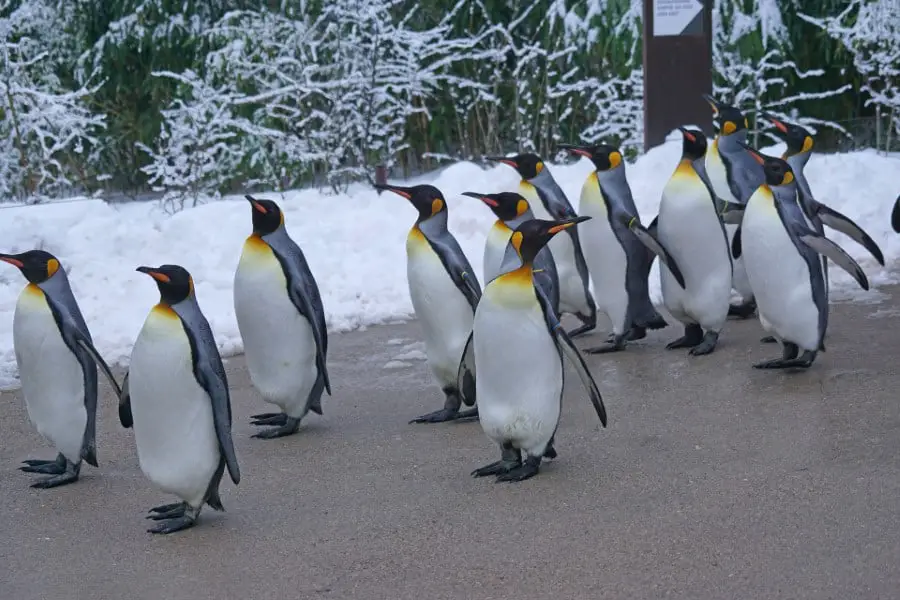
king 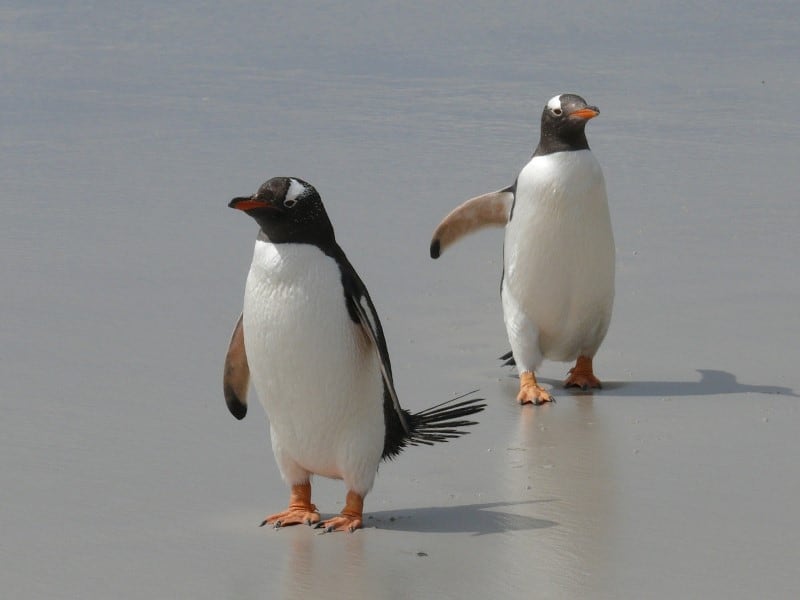
gentoo 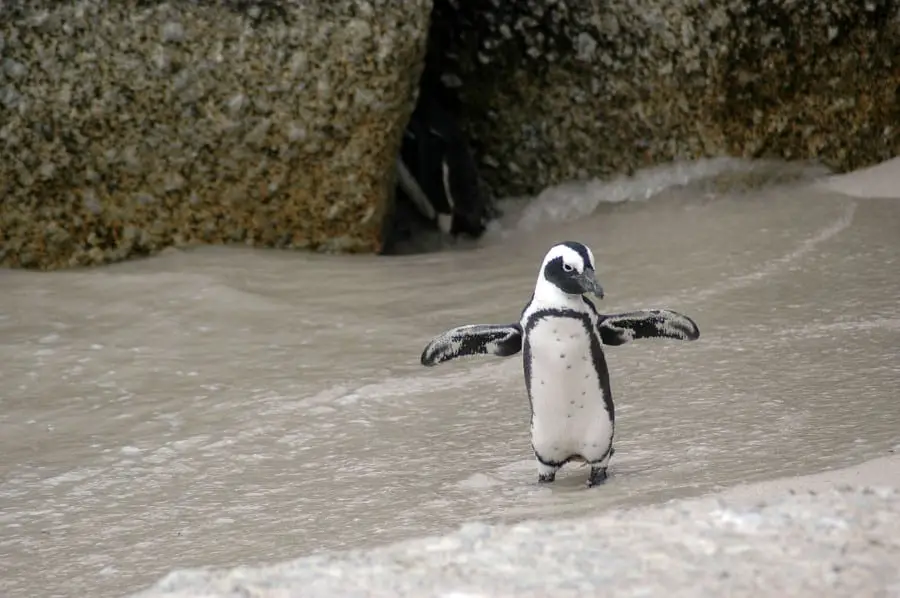
magellanic 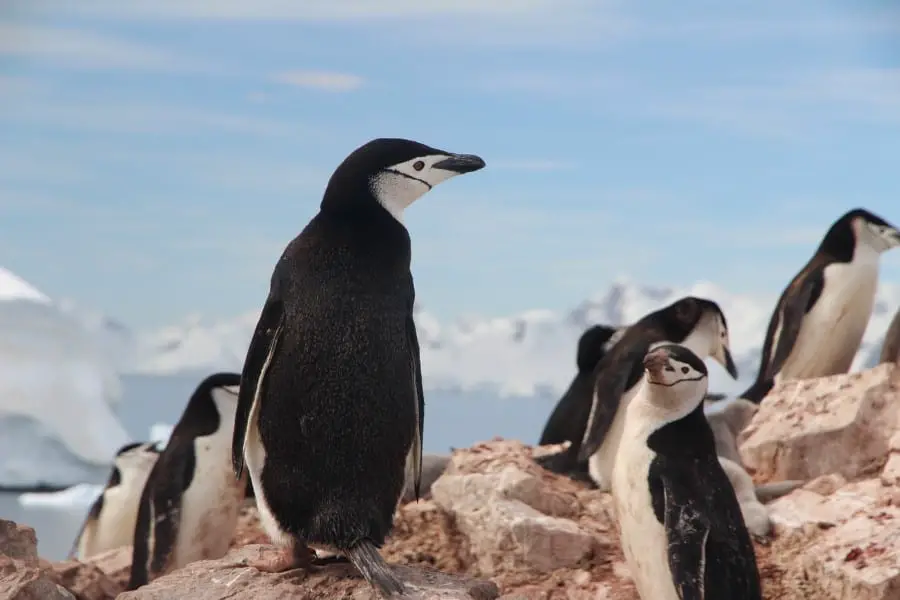
chinstrap 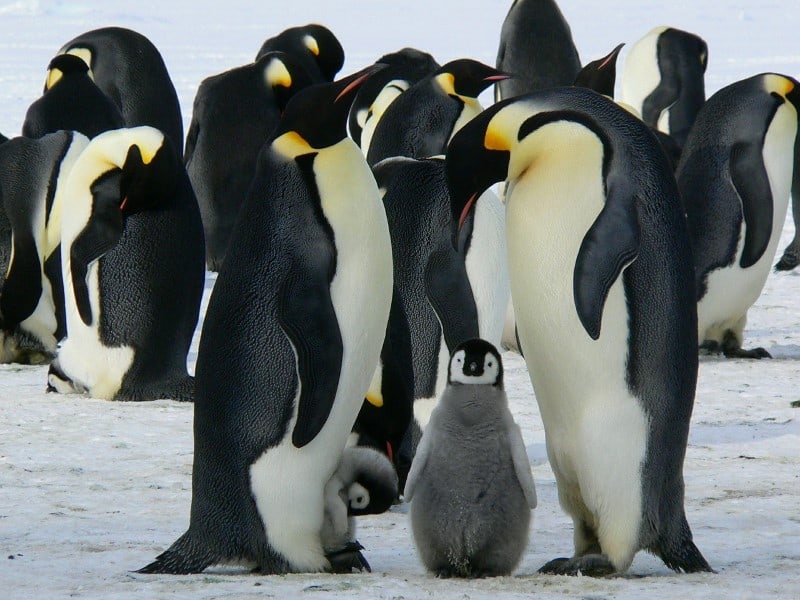
emperor
You might also like to see the list of the top 10 animals that live in the Tundra.
Classification of Penguins (Birds)
According to zoological taxonomy, penguins are put in the class Aves that is assigned for birds.
- Kingdom: Animalia
- Phylum: Chordata
- Class: Aves (avian/birds)
- Order: Sphenisciformes
- Family: Spheniscidae
So Penguins are actually members of the Spheniscidae family, which is an order of flightless birds living in the southern hemisphere of the planet. They’re known to share all of the common characteristics of members of the Aves family.
Penguins have toothless, beaked jaws and like all birds, they lay eggs, but their eggs have extremely hard shells from which their young hatch out after incubation. They also have feathers on their bodies, which are relatively short and hard when compared to other birds.
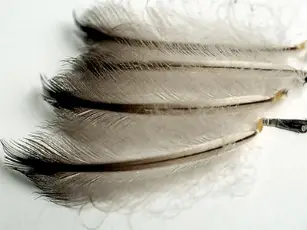
This is because penguins, living in extremely harsh temperatures, need their feathers to keep them warm, so their feathers overlap in all manner of directions, to form a thick but smooth coat that traps a layer of air beneath it.
This trapped layer of air serves as an in-built insulation mechanism for the penguins so as to protect them from freezing temperature extremes.
Penguins are warm-blooded creatures, they have a heart comprising of four chambers and a lightweight bony skeleton.
Just like their feathers, penguin wings have also evolved over time in order to adapt to the harsh, aquatic environment that they live in.
Penguins use their wings as flippers so that they can propel themselves through the water – instead of the air like other birds – in order to catch their prey. These flipper-like wings allow penguins to swim with great speed and agility.
A Penguin Is Not a Mammal, But a Bird
Contrary to what people may believe, penguins are birds and not mammals.
One of the major reasons why penguins are not mammals is their ability to lay eggs instead of giving birth to their offspring.
In addition, they also do not feed their young ones with milk from their mammary glands. Instead, they are known to feed their young ones with meals like krill, squid, and fish, which the parent penguins first chew and soften for the baby.
If we talk about their proper classification, then they are actually birds in the family Spheniscidae and subclass Impennes.
Some of the defining features which prove that penguins are birds include the presence of wings, their ability to lay eggs, and their manner of feeding their young ones, which is similar to that of most birds.
Also, their skeleton has light, hollow bones, which is a distinct feature characteristic of birds and has webbed feet instead of paws or legs possessed by mammals.
Common Misconceptions about Penguins Being Mammals
A number of factors are responsible for fueling the misconceptions about penguins being mammals rather than birds, one of them being the straight upright posture adopted by penguins.
However, penguins are primarily aquatic birds that are swifter in the water when compared to more terrestrial environments. On land, they almost “waddle” rather than walk.
Their ability to swim with speed and agility in water is because their body is streamlined shaped and their flipper-like wings govern and accelerate their swimming technique.
Another major reason why penguins are often mistaken for mammals is their group behavior for protecting their fragile young ones and conserving heat.
Penguin grouping
In order to perform both these tasks, penguins usually snuggle close together in groups of six with their offspring present in the middle for maximum protection against the outer harsh climate. This behavior is unique to birds but commonly observed in many mammalian species too.
The texture and appearance of a penguins’ skin can make it seem like fur. However, their skin is actually covered with closely packed short and stiff feathers for protection against their harsh elements.
This insulation property against the cold functions due to the fact that these feathers are waterproof. The feathers also come in handy for trapping in the air and therefore provide buoyancy when in water.
The misconception is also further fueled by the fact that young penguins actually do possess a downy fur on their bodies for protecting their fragile bodies against the temperature extremes.
However, as they grow older, the fur is shed, and replaced by feathers. Another purpose served by the feathers is that they help in providing camouflage against predators – this is known as “countershading”.
The feathers on a penguin’s back are of a darker color than those on the front. Most mammalian species show excellent camouflage abilities as a survival mechanism.
The fact that penguins also achieve the same degree of camouflage is also a reason why people often mistake penguins for being mammals rather than birds.
Education Resources
For all those Penguin enthusiasts, continue your learning about Penguins, find out much more about them in this complete guide to Penguins.
Penguins of the World
Video Resources
So to finish…
Penguins are unable to fly, and we usually associate birds with soaring on the wing through the air.
This question arises in the first place because we often see images of penguins swimming underwater or waddling in the snow-covered tundra of Antarctica. However, penguins are put firmly in the classification of birds (Aves) in zoological terms.
We hope this has been useful, let us know your thoughts in the comments below.
This content has been checked and verified by a qualified veterinary practitioner. The article has been reviewed by our editorial board and has been approved for publication in accordance with our editorial policy.
